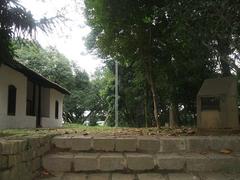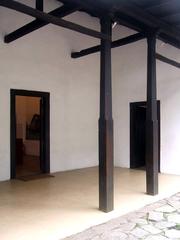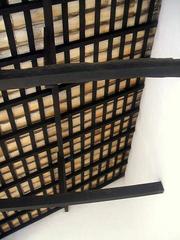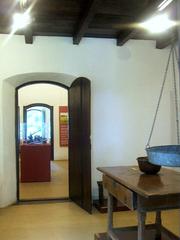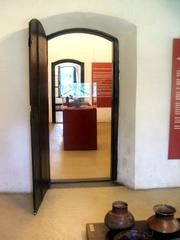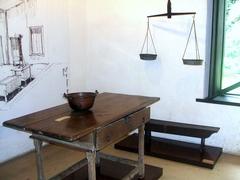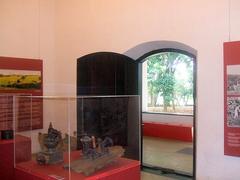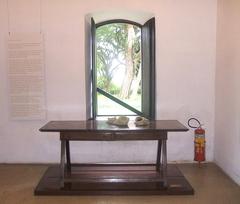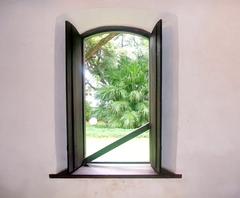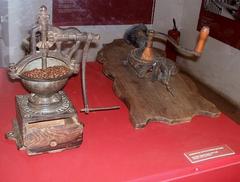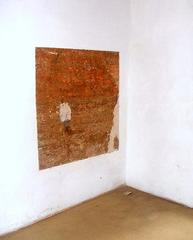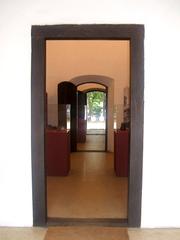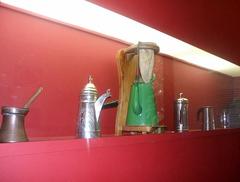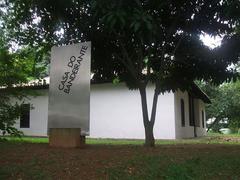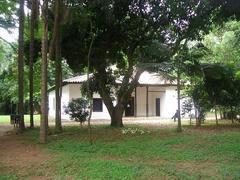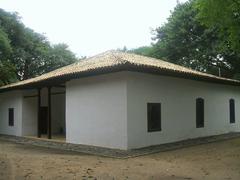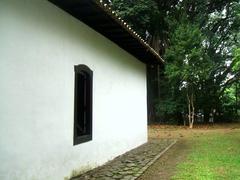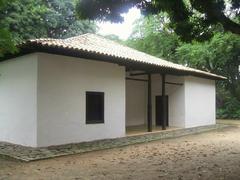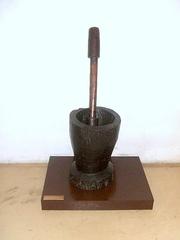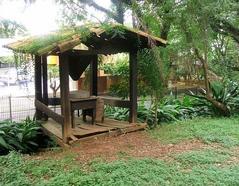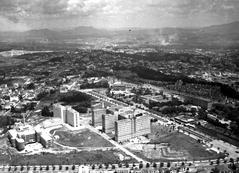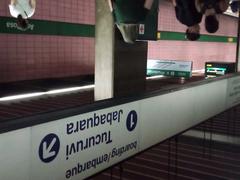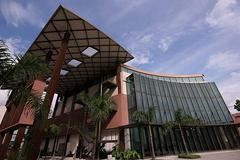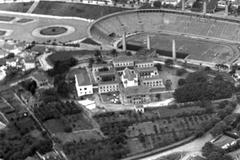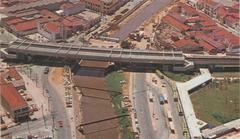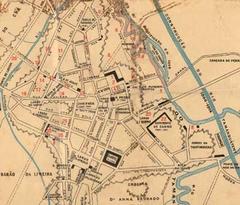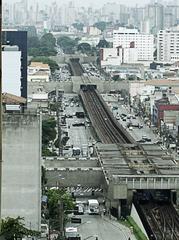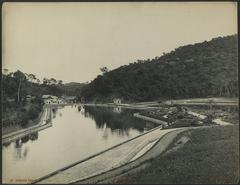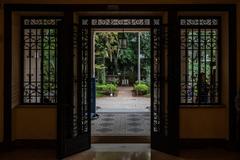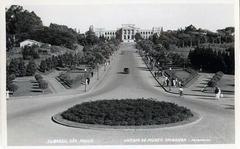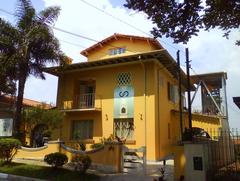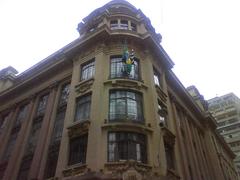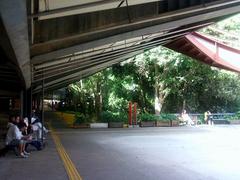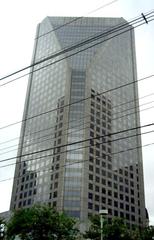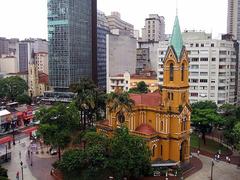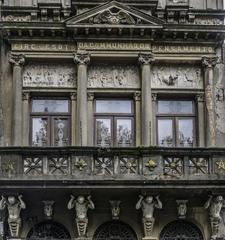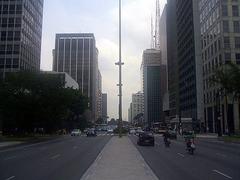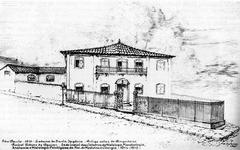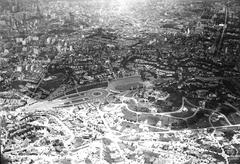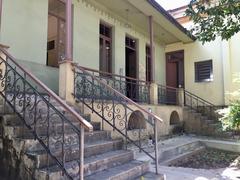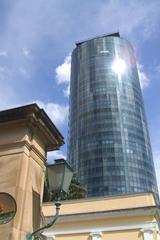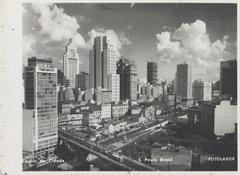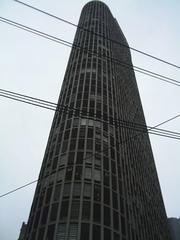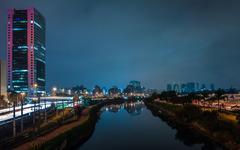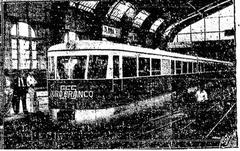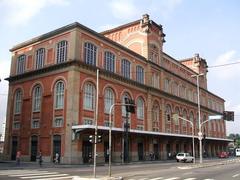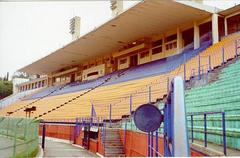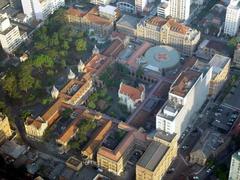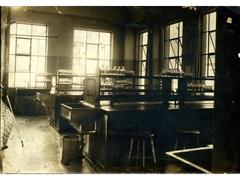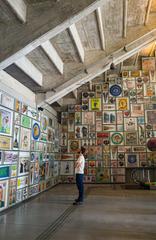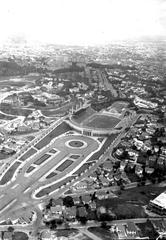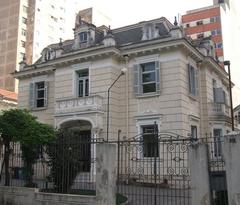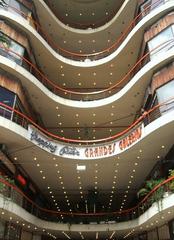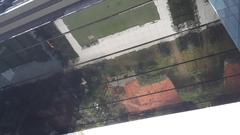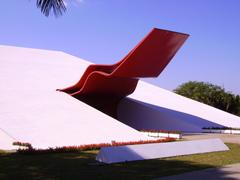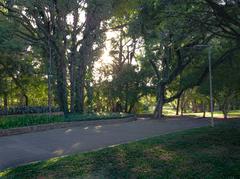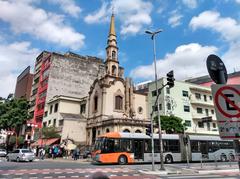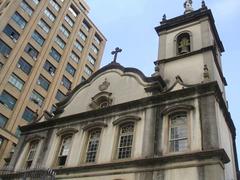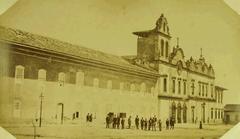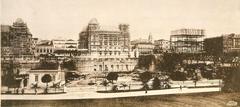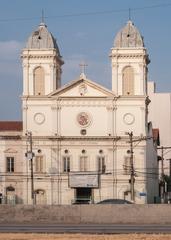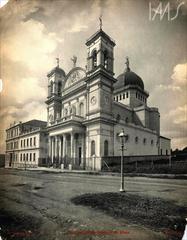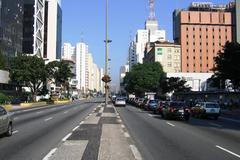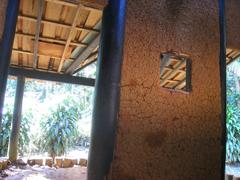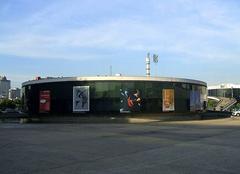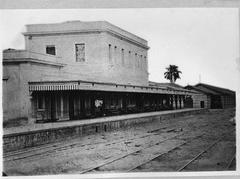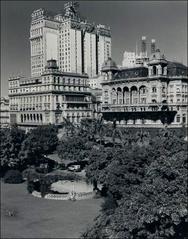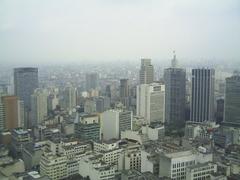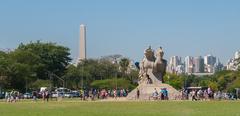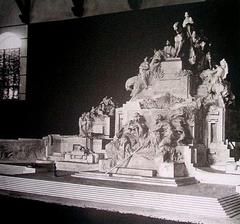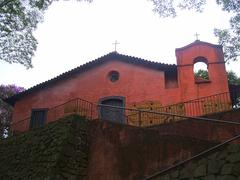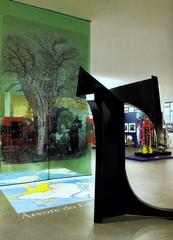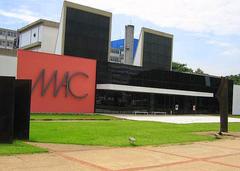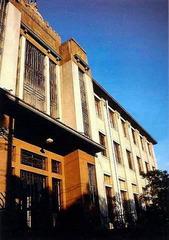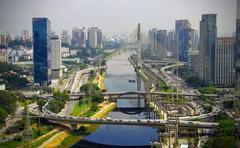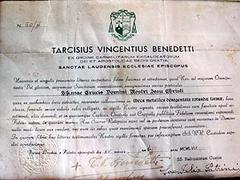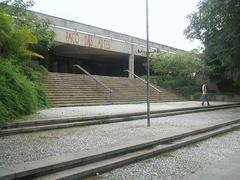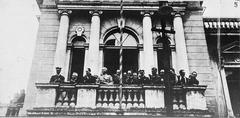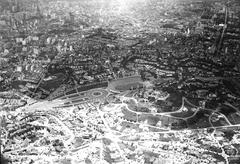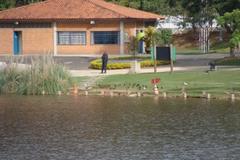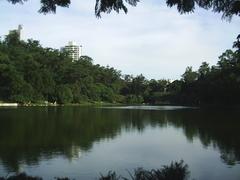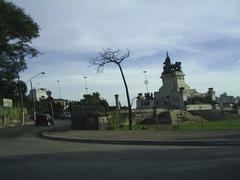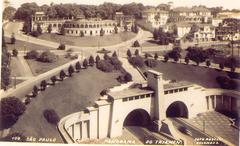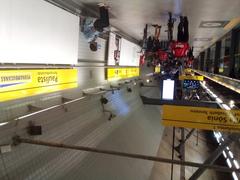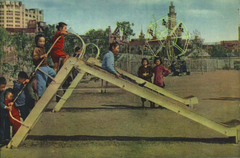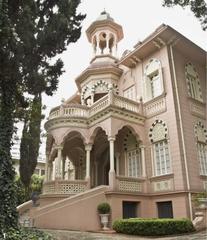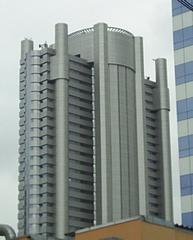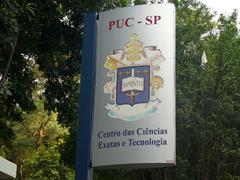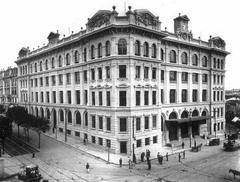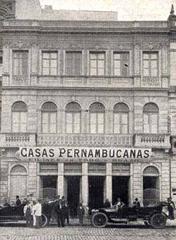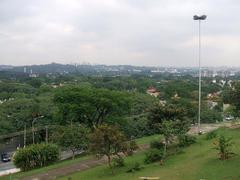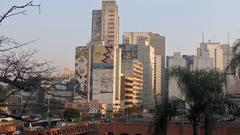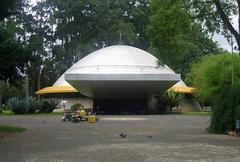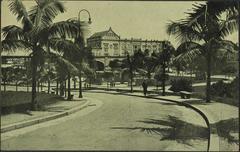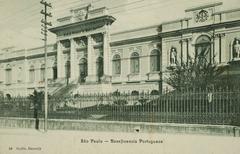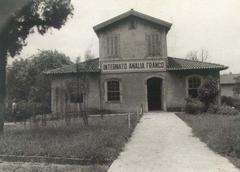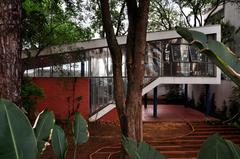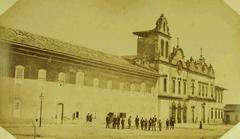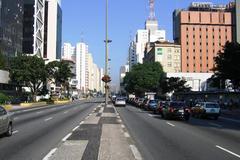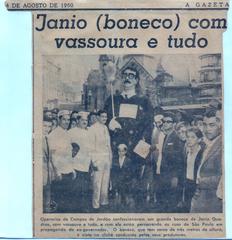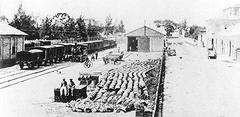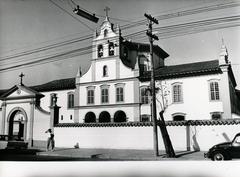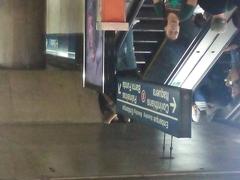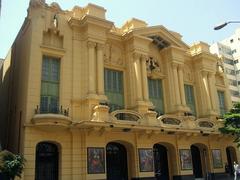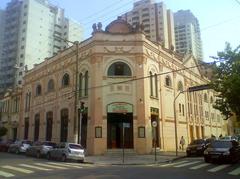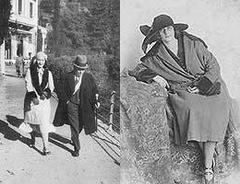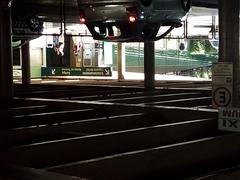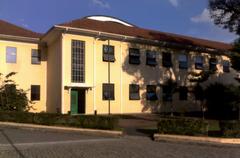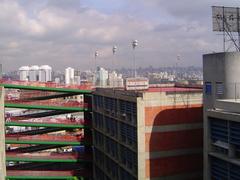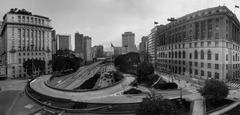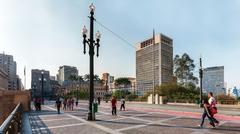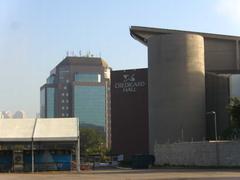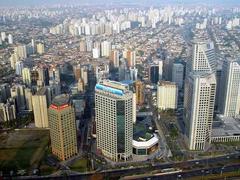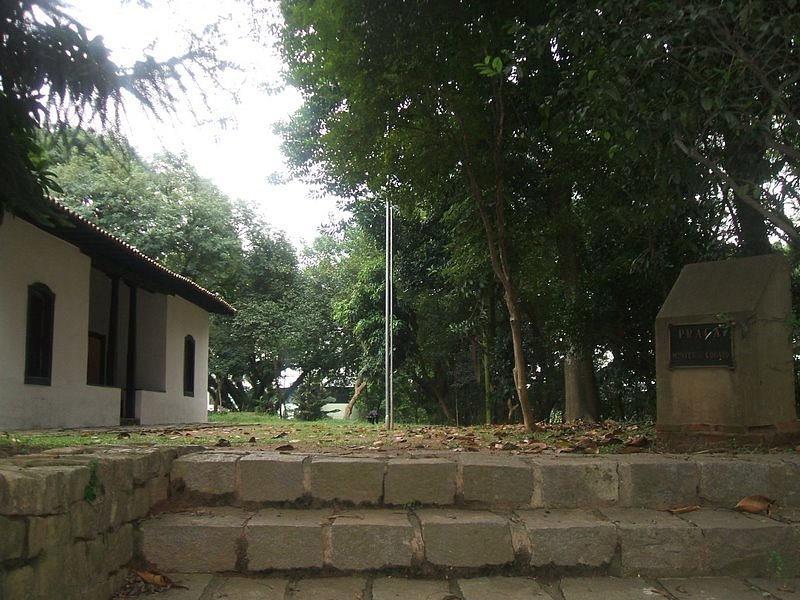
Guide to Visiting Casa do Bandeirante in São Paulo
Date: 19/07/2024
Introduction
Casa do Bandeirante, situated in the Butantã district of São Paulo, Brazil, is an exceptional historical site that offers a unique glimpse into the colonial past of the region. Built in the 17th century, this house stands as a testament to the architectural style known as ‘Paulista Colonial,’ characterized by its robust construction using local materials such as taipa de pilão (rammed earth). The house was originally inhabited by bandeirantes, Portuguese settlers and explorers who played a crucial role in Brazil’s territorial expansion. These bandeirantes embarked on expeditions into the interior of the country in search of precious metals and indigenous slaves, significantly shaping Brazil’s geographical and cultural landscape (Museu da Cidade de São Paulo).
Today, Casa do Bandeirante is part of the Museu da Cidade de São Paulo, a network of museums dedicated to preserving and promoting the city’s rich historical and cultural heritage. The museum has been meticulously restored to reflect the period’s architecture and lifestyle, allowing visitors to step back in time and experience the daily lives of the bandeirantes. With its focus on educational programs, guided tours, and special events, Casa do Bandeirante provides an immersive and informative experience for all who visit (Instituto Butantan).
Table of Contents
- Introduction
- History of Casa do Bandeirante
- Visitor Information
- Nearby Attractions and Special Events
- Travel Tips
- FAQ
- Conclusion
History of Casa do Bandeirante
Origins and Early History
Casa do Bandeirante, located in the Butantã district of São Paulo, Brazil, is a significant historical site that dates back to the 17th century. The house is a prime example of the rural architecture of the period, reflecting the lifestyle and culture of the bandeirantes, the Portuguese settlers and explorers who played a crucial role in the expansion of Brazil’s territory. The house itself was constructed around 1701, during a time when the bandeirantes were actively exploring and settling in the region. The architecture of Casa do Bandeirante is characterized by its simplicity and functionality, with thick adobe walls, a tiled roof, and a layout designed to accommodate the needs of a rural household. The structure has been preserved to maintain its historical integrity, offering visitors a glimpse into the past.
Role of the Bandeirantes
The bandeirantes were instrumental in the exploration and colonization of Brazil’s interior. They were often of mixed Portuguese and indigenous descent and were known for their expeditions, or “bandeiras,” which aimed to capture indigenous people for slavery, search for precious metals, and expand Portuguese territory. Casa do Bandeirante serves as a testament to this era, providing insights into the daily lives of these explorers. The house’s design reflects the practical needs of the bandeirantes, with features such as large storage areas for provisions and tools, as well as living spaces that accommodated extended families and workers.
Transformation into a Museum
In the mid-20th century, Casa do Bandeirante was transformed into a museum as part of the Museu da Cidade de São Paulo. This transformation was part of a broader effort to preserve and celebrate the city’s historical heritage. The museum was officially opened to the public in 1955, and since then, it has been a key cultural and educational resource for both locals and tourists. The museum’s exhibits focus on the history and culture of the bandeirantes, showcasing artifacts, documents, and other items that provide a deeper understanding of their way of life. Visitors can explore the various rooms of the house, each of which has been carefully restored and furnished to reflect the period. The museum also hosts temporary exhibitions and educational programs that delve into different aspects of São Paulo’s history.
Architectural Significance
Casa do Bandeirante is an excellent example of the architectural style known as “Paulista Colonial,” which was prevalent in the São Paulo region during the colonial period. This style is characterized by its use of local materials, such as adobe and wood, and its adaptation to the local climate and environment. The house’s thick walls provide insulation against the heat, while the tiled roof helps to keep the interior cool. The layout of the house is also significant, with a central courtyard that serves as the focal point of the household. This design reflects the influence of Portuguese and indigenous architectural traditions, blending elements from both cultures to create a functional and aesthetically pleasing living space.
Cultural Impact
Casa do Bandeirante is not only a historical site but also a cultural landmark that plays a vital role in preserving and promoting the heritage of São Paulo. The museum’s exhibits and programs provide valuable insights into the city’s past, helping to foster a sense of identity and continuity among its residents. By exploring the history of the bandeirantes and their contributions to the development of Brazil, visitors can gain a deeper appreciation for the complex and multifaceted nature of the country’s history. The museum also serves as a venue for cultural events and activities, such as traditional music and dance performances, workshops, and lectures. These events help to keep the history and traditions of the bandeirantes alive, ensuring that they remain an integral part of São Paulo’s cultural landscape.
Preservation Efforts
The preservation of Casa do Bandeirante has been a collaborative effort involving various organizations and institutions. The São Paulo City Hall, along with cultural and historical preservation societies, has played a crucial role in maintaining the site and ensuring its accessibility to the public. Restoration projects have been carried out to repair and conserve the house’s structure, using techniques and materials that are faithful to the original construction. In addition to physical preservation, efforts have been made to document and research the history of the site and its inhabitants. This research has provided valuable information that has been incorporated into the museum’s exhibits and educational programs, enhancing the overall visitor experience.
Visitor Information
Opening Hours: The museum is open Tuesday to Sunday, from 9 AM to 5 PM. It is closed on Mondays and certain public holidays.
Admission Fees: General admission is R$10, with discounts available for students, teachers, and seniors. Children under 7 and residents of São Paulo can enter for free.
Guided Tours: Guided tours are available and highly recommended for a more in-depth understanding of the exhibits. These tours are often conducted in Portuguese, but arrangements can sometimes be made for English-speaking guides.
Accessibility: The museum is accessible to visitors with disabilities, with ramps and adapted restrooms available.
Photography: Photography is allowed in most areas of the museum, but the use of flash and tripods is typically prohibited to protect the artifacts.
Nearby Attractions and Special Events
Instituto Butantan: A renowned biomedical research center and one of the world’s leading producers of vaccines and antivenoms. The institute also features a serpentarium, a historical museum, and a biological museum. More information can be found on their official website.
Parque Villa-Lobos: A large urban park offering recreational activities such as cycling, jogging, and picnicking. The park also hosts cultural events and has facilities like sports courts and playgrounds. Details are available on the São Paulo Parks website.
Museu de Arte Contemporânea (MAC): Located a short drive away, this museum houses an impressive collection of contemporary art, including works by Brazilian and international artists. Visit their official website for more information.
Travel Tips
Best Time to Visit: The best time to visit Casa do Bandeirante is during the weekdays, particularly in the morning, to avoid the weekend crowds. São Paulo’s weather is generally mild, but visiting during the dry season (May to September) can make for a more pleasant experience.
Dining Options: While Casa do Bandeirante does not have an on-site café, there are several dining options in the Butantã area. The nearby Butantã Food Park offers a variety of food trucks and stalls serving local and international cuisine.
Transportation and Parking: The museum is accessible by public transportation, with several bus lines stopping nearby. The closest metro station is Butantã on Line 4 (Yellow), from which the museum is a short bus ride or a 20-minute walk. For those driving, there is limited parking available on-site, and additional parking can be found in the surrounding streets.
Safety and Etiquette: Visitors are encouraged to follow standard museum etiquette, such as not touching the exhibits and keeping noise levels to a minimum. Security personnel are present to ensure the safety of both the visitors and the artifacts. In case of any emergencies, follow the instructions of the museum staff.
FAQ
Q: What are the visiting hours for Casa do Bandeirante?
A: The museum is open from Tuesday to Sunday, 9 AM to 5 PM. Check the official website for any changes.
Q: Is there an admission fee?
A: General admission is R$10, with various discounts available. Children under 7 and residents of São Paulo can enter for free.
Q: Are guided tours available in English?
A: Yes, while most guided tours are in Portuguese, arrangements can be made for English-speaking guides.
Q: Is Casa do Bandeirante accessible to visitors with disabilities?
A: Yes, the museum has ramps and adapted restrooms to ensure accessibility.
Q: How can I get to Casa do Bandeirante?
A: The museum is accessible by several bus lines and is near the Butantã metro station. Limited parking is available on-site.
Q: What health measures are in place?
A: Mandatory mask-wearing, hand sanitizing stations, and social distancing protocols are in place. Check the museum’s health guidelines for the latest information.
Conclusion
Casa do Bandeirante is more than just a historical building; it represents a vital link to São Paulo’s rich and complex past. Its preservation and transformation into a museum offer invaluable insights into the lives of the bandeirantes, the Portuguese settlers who played a pivotal role in shaping Brazil’s history. Through its exhibits, guided tours, and educational programs, the museum fosters a deeper understanding of the cultural and historical context of São Paulo and Brazil as a whole. By visiting Casa do Bandeirante, tourists can gain a profound appreciation for the challenges and achievements of the early settlers, making it an essential destination for history enthusiasts and cultural explorers alike (Museu da Cidade de São Paulo, Instituto Butantan, University of São Paulo).
To enhance your visit, consider exploring nearby attractions such as the Instituto Butantan and the University of São Paulo campus, both of which offer additional cultural and educational experiences. Whether you are a local resident or a tourist, Casa do Bandeirante provides a meaningful connection to São Paulo’s historical and cultural heritage, ensuring that the legacy of the bandeirantes continues to inspire and educate future generations.
References
- Museu da Cidade de São Paulo. (n.d.). Casa do Bandeirante. Retrieved from https://www.museudacidade.sp.gov.br
- Instituto Butantan. (n.d.). Retrieved from https://www.butantan.gov.br
- University of São Paulo. (n.d.). Retrieved from https://www5.usp.br
